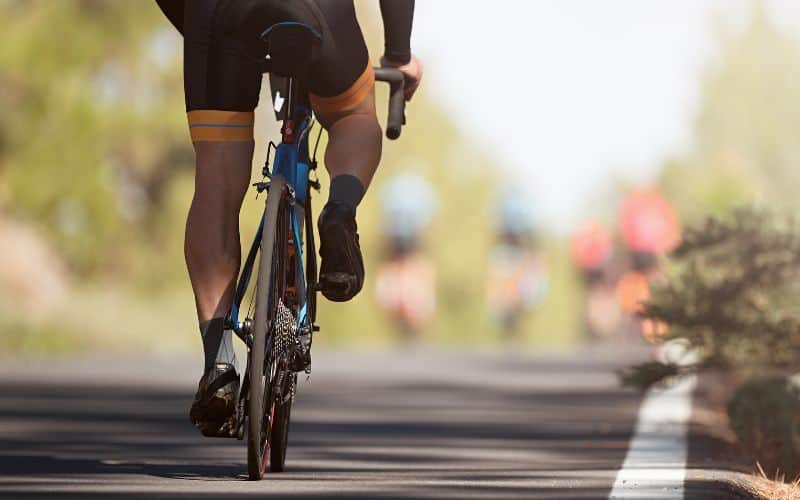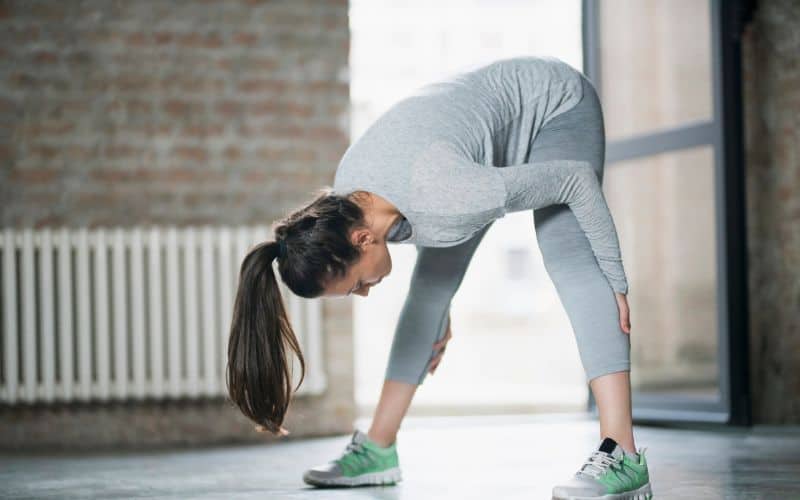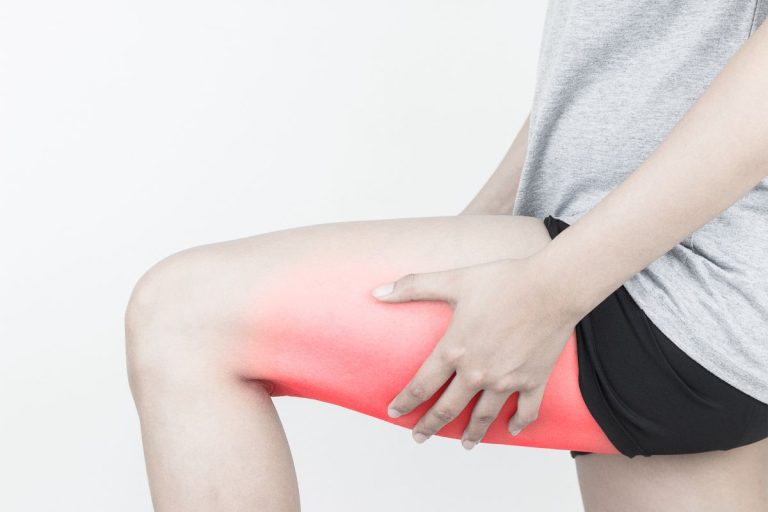Have you ever witnessed someone claiming that they couldn’t touch their toes? Even though I have personally experienced the pain and resistance in the hind thigh muscles when touching the toes. It’s called a tight hamstring!
Athletes frequently experience tight hamstrings. These are the muscles that run along the back of the thigh and can feel stiff when you bend over. There are a few things you can do to help loosen tight hamstrings, and cycling is one of them.
Cycling is a great way to improve cardiovascular health; it helps burn calories, build strength, and tone up the legs. It also helps the leg muscles develop better endurance and strength, which helps reduce the strain on the joints.
Your calves, hamstrings, glutes, and quadriceps are all used when you are cycling.
The ability to bring your legs back up to your torso when pedaling depends primarily on the strength of your muscles. The pedaling motion does not fully extend the hip; if you don’t stretch, you’ll feel tight posterior leg muscles.
The Hamstring Muscles
The main thigh muscle is connected to the bone by the hamstrings. These are tendons (powerful strands of tissue) at the back side of the thighs. The collection of three muscles that run all along the back side of the leg, from your hip to just beneath your knee, is also referred to as the hamstrings.
While walking or standing, the hamstring muscles are not extensively engaged. They only start engaging when you start moving around. Motions that bend the knee, such as cycling, climbing, sprinting, and jumping activate the hamstrings.

What Happens To Your Hamstring When You Cycle?
When you are cycling, the hamstrings serve as one of the primary groups of muscles involved in pedaling. The top part of them contributes to the ‘push’ phase of pedaling and the lower ones to the ‘pull’ phase.
In order to maintain control of the hamstring muscles, it is important to consider both ends of a muscle even though they are joined and function as one unit.
For instance, cycling impacts the hamstrings in different ways. The upper hamstrings are flexed at the hips, which can cause them to become almost weak and loose. The knee muscles of the lower hamstrings stay bent. As a result, the lower section shrinks and tightens. This contrast between the two ends of the muscle can cause issues like strain and tension.
Hip motion range is limited when the hamstrings are tight. Lack of hip mobility can cause leg and back discomfort, pain, hamstring tendinopathy, and knee ache. It can also affect the rider’s aerodynamics, strength, and performance during the ride. This is because cycling demands the ability to sustain a forward lean for an extended time period while maintaining the hips in flexion.
Don’t worry, it’s not all bad! Here are a few things to help your hamstrings.
Related article – Is A Road Bike Good For Your Back?
How To Help Your Hamstrings
Hamstring Stretching
Hamstring strengthening and stretching are the simplest ways to completely prevent hamstring tightness.
Particularly when you aren’t riding as much, some strength training with movements like deadlifts and squats helps healthy hamstring muscles. The best technique to handle tight hamstrings and prevent hamstring problems is to perform a daily stretching exercise.
Related article – Best Stretches For Cyclists To Help Recover Faster

Cycling Techniques To Loosen Your Hamstrings
There are techniques for cycling that can help loosen the hamstrings. Most of these techniques are geared toward activating the hamstring, helping it perform a full range of motion, so it can be stretched.
Cycling can also help build the strength of the hamstrings.
Clips
If you want to separate your quadriceps and hamstrings while cycling, invest in clips that fit your pedals.
Without utilizing clips, it is tough to do a stroke that doesn’t focus on building force from pressing down on the pedal. While cycling unclipped, pedaling is the least productive motion for developing hamstring strength.
Instead of being reliant on downstroke-generated power, clips let you better control how much force you apply all across the pedaling stroke. This enables you to concentrate on muscles like the hamstrings.
Related article – Is Cycling Good For Achilles Tendonitis?
Upstroke Pedals
If you want to focus on your hamstrings, concentrate your power on “pulling” your foot up while it is at its lowest point during the pedaling stroke. An upstroke depends on your hamstring to produce power.
The majority of riders can produce a lot more force on the down stroke. It’s more of a natural movement to activate your quads by just pushing down on a pedal.
However, if you want to optimize your cycling technique, you’ll need to push and pull seamlessly during each pedal stroke. So keep practicing that pulling feeling!
Circular Stroke
With a circular pedaling motion, you evenly distribute the work between your calves and quads. You’ll also experience some modest hamstring muscular strength.
To pedal in a circular motion, make an effort to apply force with a smooth and even distribution. If done correctly, the rate of motion is generally equal throughout the whole stroke.
If your hamstrings are weak in comparison to the other muscles, you can use this circular stroke strategy to strengthen them.
Isometric Training
It’s critical to keep an even speed throughout the upstroke or circular stroke.
For example, when executing an upstroke, ensure that the stroke’s pace is the same at both its start and its end. The hamstrings and other involved muscles will receive isometric training as a result, benefiting the entire muscle.
Pulls and strains are more likely to occur when you pull firmly at the start of the upstroke and then glide through the remaining duration of the action. This is because it causes irregular muscle growth. Additionally, it may lead to hamstring shortening, which reduces how far the hamstring can stretch during a downstroke.
Make Sure You Have Proper Posture When Cycling
One of the top reasons for sore hamstrings is an incorrect seat position in the cycle. Your hamstrings and glutes are overworked if your seat is far back or too high, and your hamstrings are overextended with each pedal stroke.
Hamstring stiffness and discomfort can be brought on by saddles that put too much stress on the sciatic nerve, which supports those muscles.
Related article – Why Does My Bike Seat Keep Coming Loose?
Long Rides
Make sure you’re well trained before heading off for a long ride. When you’re exhausted, it can really increase the chances of a hamstring injury. This typically happens when the muscle integrates with the tendon (myotendinous junction).
Cycling for hours keeps your legs in a bent position, which retains the glutes and hamstrings in a stretched form. This can eventually cause a condition known as gluteal amnesia, sometimes known as dead butt syndrome! Basically, it means your glutes, which are the strongest muscles in your leg, fail to activate properly.
What Is A Hamstring Strain?
A hamstring strain is a mini-damage that occurs in the muscle tissue as a result of being stretched and overworked. Exercising or cycling at a low frequency at full force might cause hamstring pain. It may also occur if you push yourself too far or too quickly, depriving your muscles of the chance to adjust and grow stronger.
Immediate self-care for any soft tissue injury is important. The standard “R.I.C.E.” approach of rest, ice, compression, and elevation is appropriate. But, it might be challenging to avoid a substantial strain, so if the issue isn’t beginning to heal within a few days, seek help and consult a doctor.
Related article – Best Massage Tools For Cyclists – Help Recover Faster!

